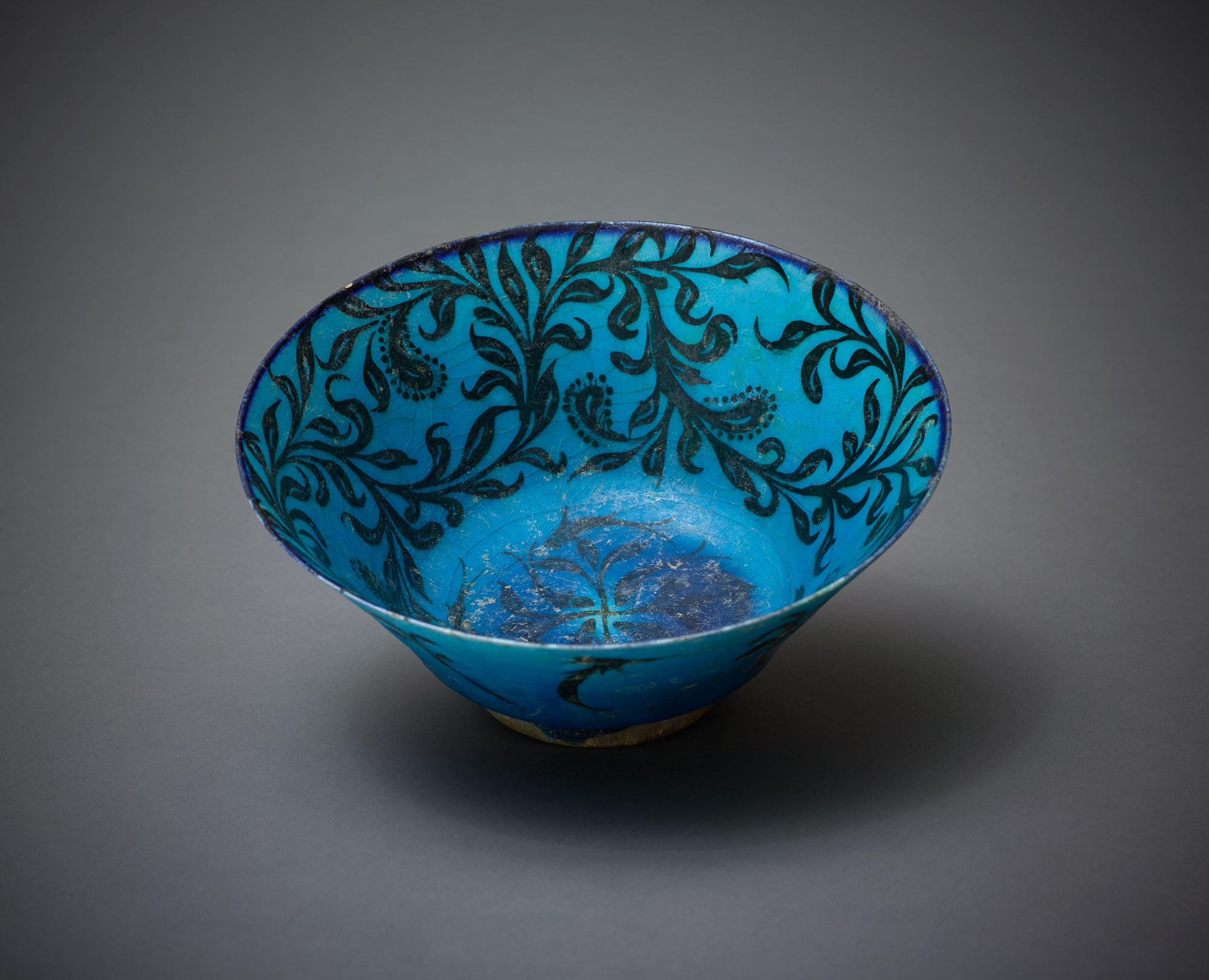Click on the image to zoom
Bowl
- Accession Number:AKM562
- Place:Iran
- Dimensions:Diameter 21.9 cm, height 10 cm
- Date:13th century
- Materials and Technique:Fritware, underglaze-painted
The development of a fritware ceramic (also known as stonepaste) in eleventh-century Iran revolutionized ceramic production, since it presented the opportunity to create a thinly potted white body that could easily be shaped and decorated. The new fritware ceramics could also be moulded into complex objects such as this conical bowl with its straight walls that are more suited to metalwork production. An early medieval recipe left by Abu’l-Qasem Kashani, a member of a family of potters, informs us that fritware is made out of ten parts ground quartz, one part ground glass, and one part fine white clay. The white body of this bowl is a perfect background for the combination of black-painted decoration and transparent turquoise glaze. The undulating stems of the water-weed motif on the sides of the bowl surround a school of fish painted in a thin brush, allowing for finer lines and elaborate flourishes.
Note: This online resource is reviewed and updated on an ongoing basis. We are committed to improving this information and will revise and update knowledge about this object as it becomes available.


